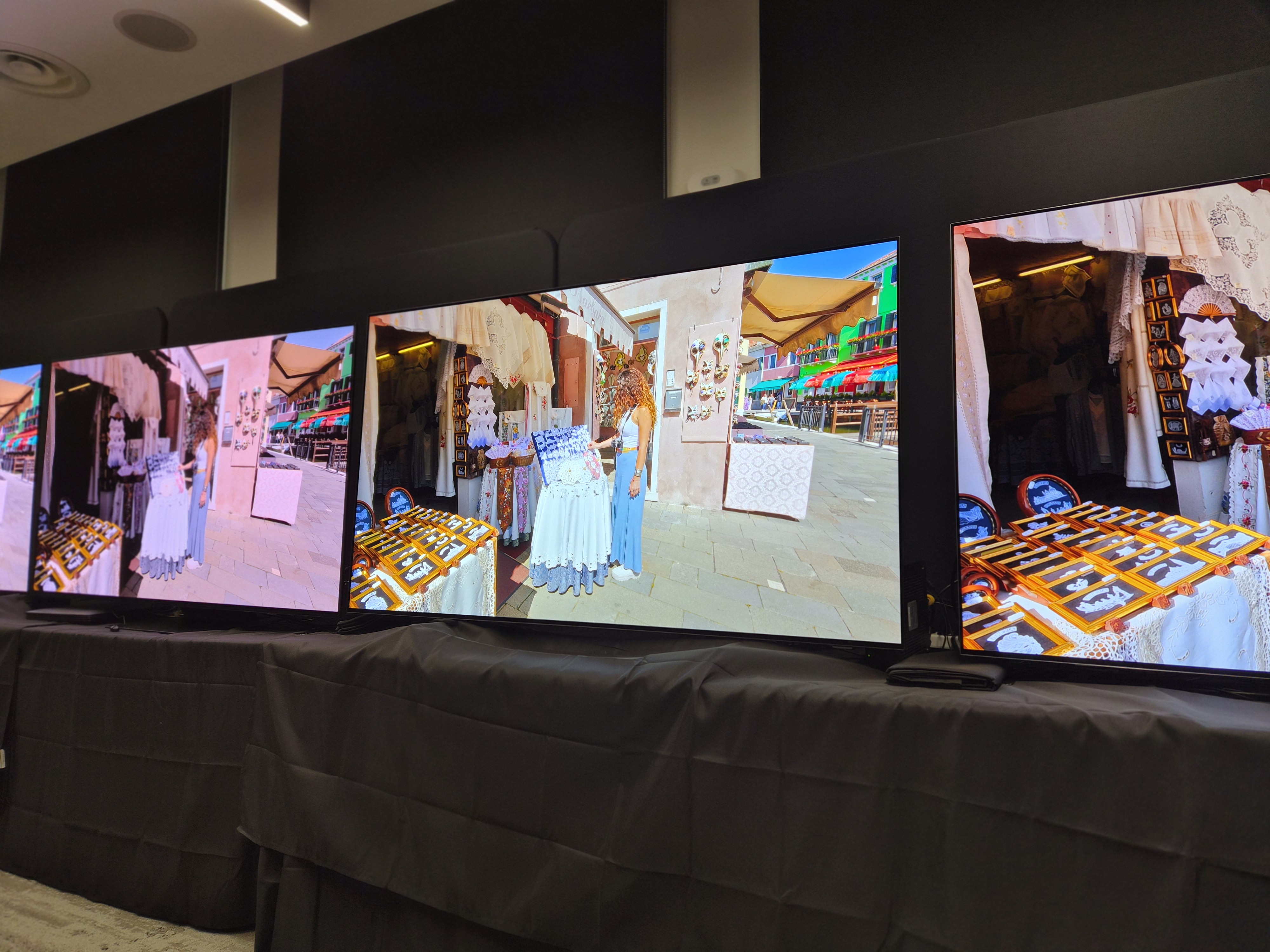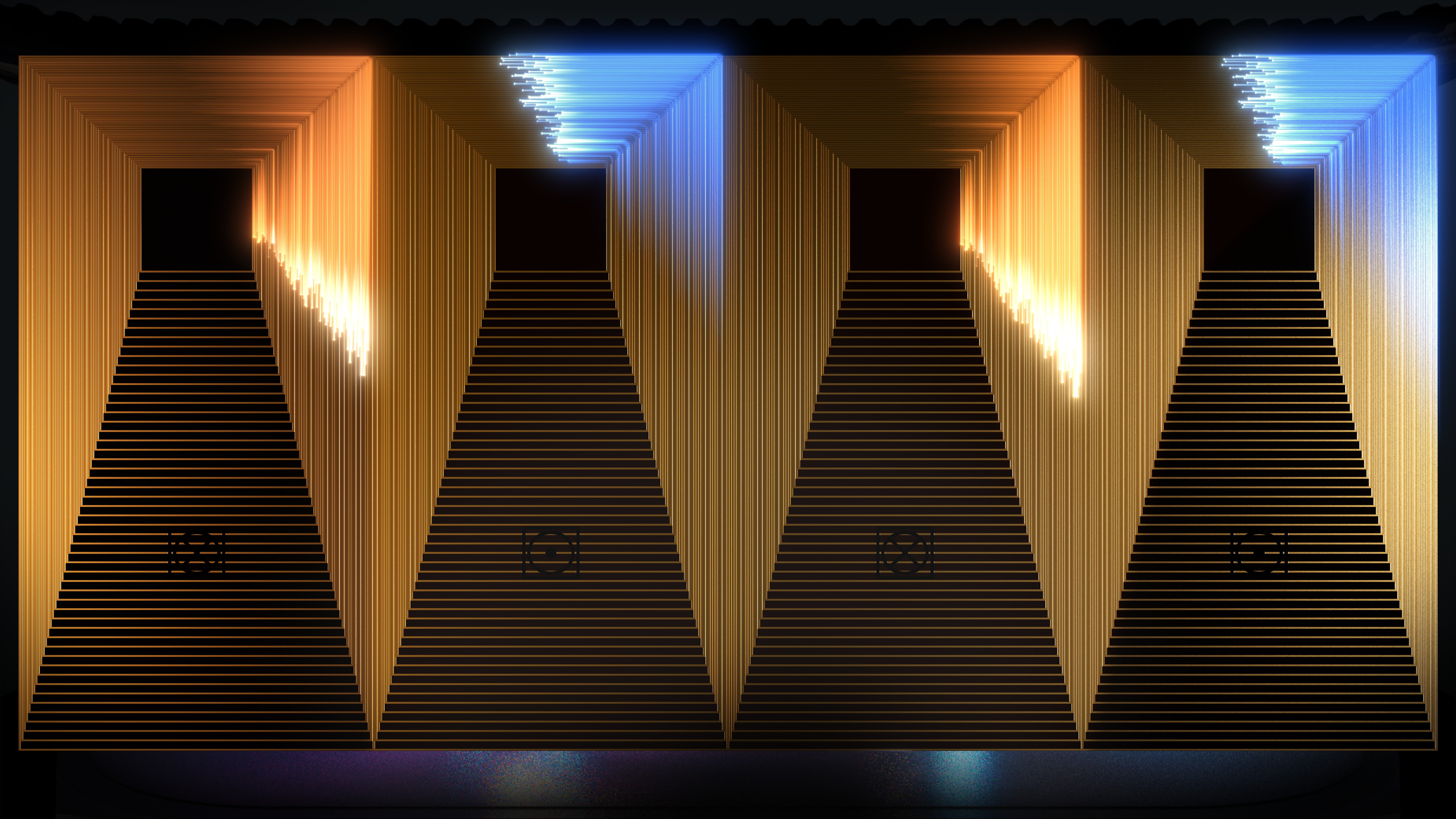Early Verdict
Aggressive pricing makes the OLED950 a compelling option, but it will need to back this up with a solid, controlled performance in our review rooms to earn a recommendation
Pros
- +
Bright, punchy picture
- +
Undercuts rivals on price
- +
Solid app and HDR support
Cons
- -
Only previewed in out of the box settings
- -
Only two HDMI 2.1 inputs
Why you can trust What Hi-Fi?
2025 is rapidly turning into one of the most interesting to date for OLED TV fans. A big part of that is the sea of next generation TVs flooding the market.
And in that sea, the Philips OLED950 is our white whale – the last flagship from a mainstream player we’re waiting to test this year. Why should you care when we’ve seen other TVs with its new Primary RGB Tandem OLED panel tech?
Because not only is Philips promising the OLED950 OLED will go brighter than its already cornea burning Philips OLED909 predecessor, it's also promising to have fixed one of our biggest gripes with the firm’s past OLEDs. Specifically, their slightly aggressive handling of colours.
And after we pushed past the crowds to get some hands on time with the set, we’re taking those claims pretty seriously and can see the Philips OLED950 being one of the firm’s best TVs to date – if it continues to deliver the goods when we get it in for the full What Hi-Fi? treatment, that is.
Price
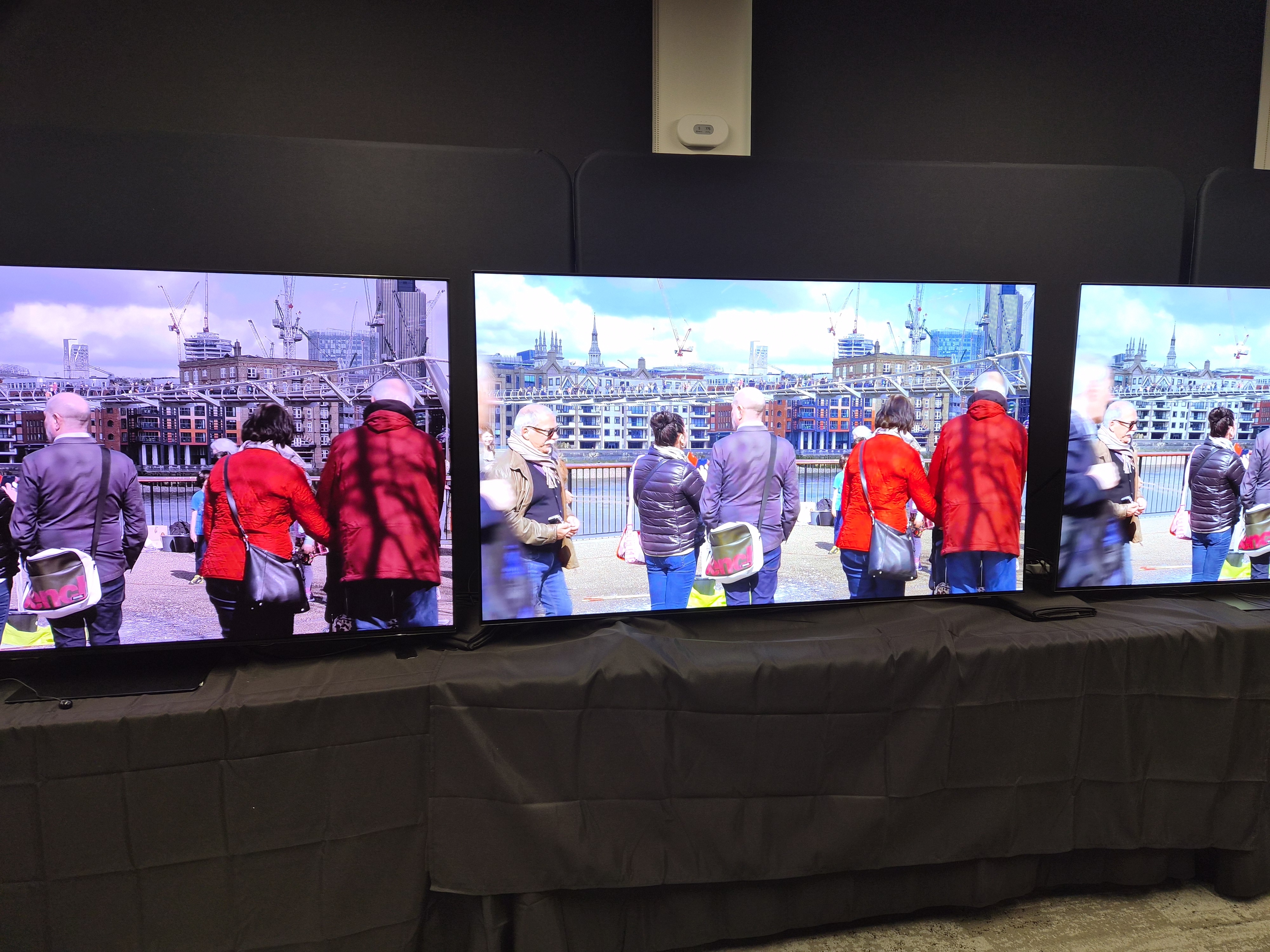
The OLED950 sits at the top of Philips' 2025 TV range, with the OLED910 nipping at its heels, just below it. The OLED has a price tag to match with the 65-inch and 77-inch models initially carrying £2799 and £3499 recommended retail prices at launch. If you’re in the US or Australia, we’re sorry to have to confirm that once again the models aren’t available in your regions.
You’ll notice we only mention two, rather large sizes. That’s because Philips has taken OLED TV makers’ focus on “bigger is better” to the next level this year and chosen not to release a smaller 55-inch model. Get your measuring tape out if you’re short on space.
The initial price puts the Philips OLED950 in the same bracket as the Sony Bravia 8 II, Samsung S95F, LG G5 and Panasonic Z95B. But, in an interesting turn of events, prices for both sizes dropped significantly the moment they went on sale. You can currently buy the 65-inch OLED950 for around £2199 as a result.
The latest hi-fi, home cinema and tech news, reviews, buying advice and deals, direct to your inbox.
That makes it the cheapest flagship OLED TV from a mainstream player available right now outside of its slightly less advanced sibling, the 65-inch OLED910, which currently costs £1999. The closest rival is the Panasonic Z95B, which currently costs £2299. Above the two, the 65-inch Sony Bravia 8 II and LG G5 both sell for £2499. At the top, the 65-inch Samsung S95F currently costs £2699.
Yes, OLED TV prices are fluctuating fast right now, with us getting closer and closer to Black Friday, but that’s an atypically chunky drop in price for such a new OLED TV and potential differentiator for Philips in a crowded market.
Build
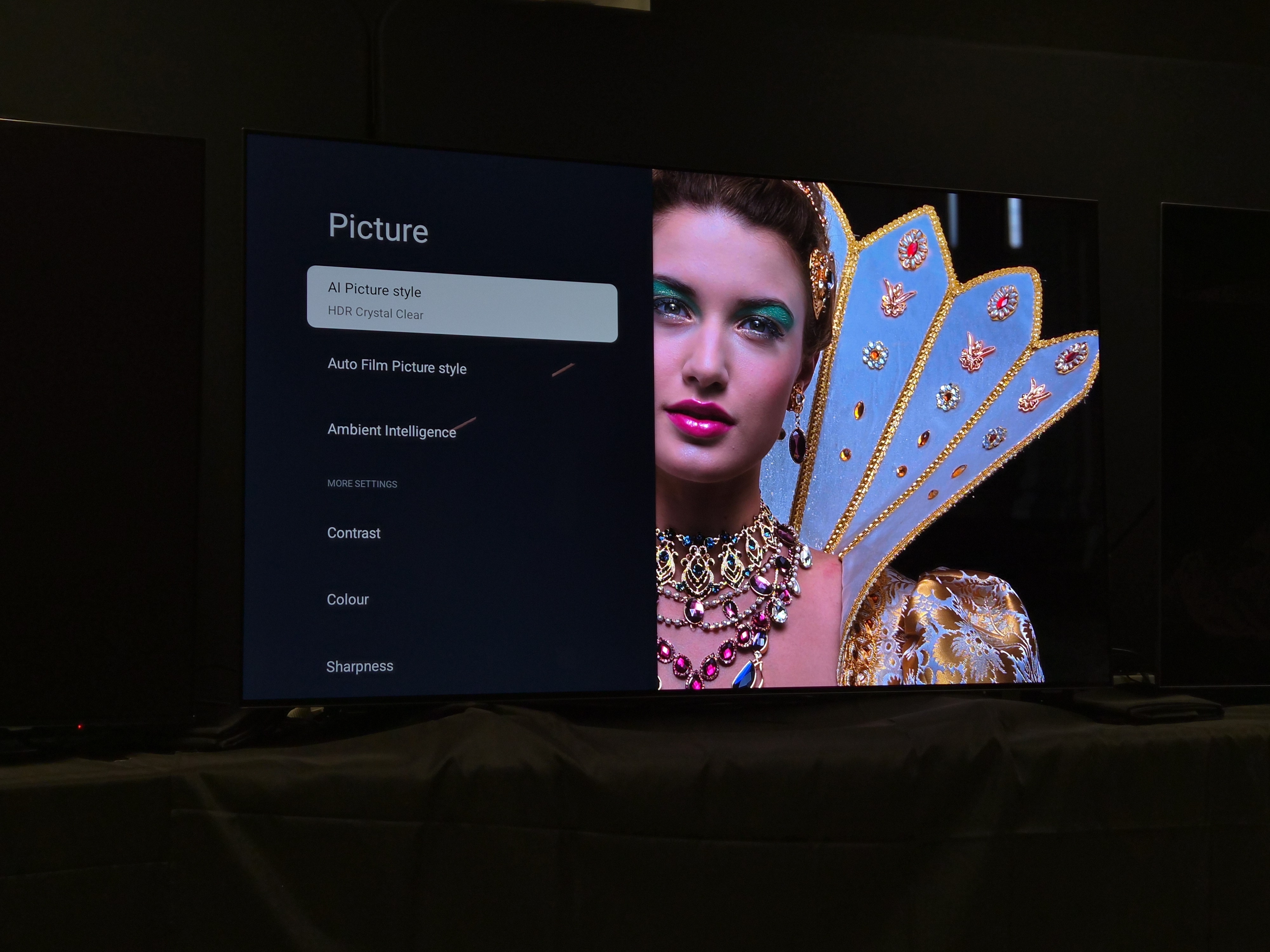
The set is also a slight departure from past models with its design, with Philips choosing to remove the bolted-on soundbar seen on its past flagships – much to our editor and other team members’ joy. This, plus its sleek feet design means it should be easy to place a soundbar underneath the screen, and that you could sit the OLED950 on a smaller stand with zero issue. We'll check to confirm when we get one into our review rooms.
The rechargeable remote also looks incredibly similar, almost identical, to last year's. This is no bad thing as it’s rechargeable and features a backlight – two things LG in particular doesn’t offer with its G5.
Ambilight fans will also be delighted to spot the four-sided Ambilight Intelligence 3.0 version around the set's edges. This uses light sensors built into the TV to optimise the light’s output to match the ambient settings, in theory helping HDR images look better in bright rooms and reducing eye strain.
Ambilight is a constant Marmite feature among the home cinema team at What Hi-Fi?, with some loving it and others feeling it's a distraction from what’s playing on screen. Based on our demo, here it works very similarly to the version we’ve seen in the past, so it’s unlikely to change either camp’s mind on the tech.
Features
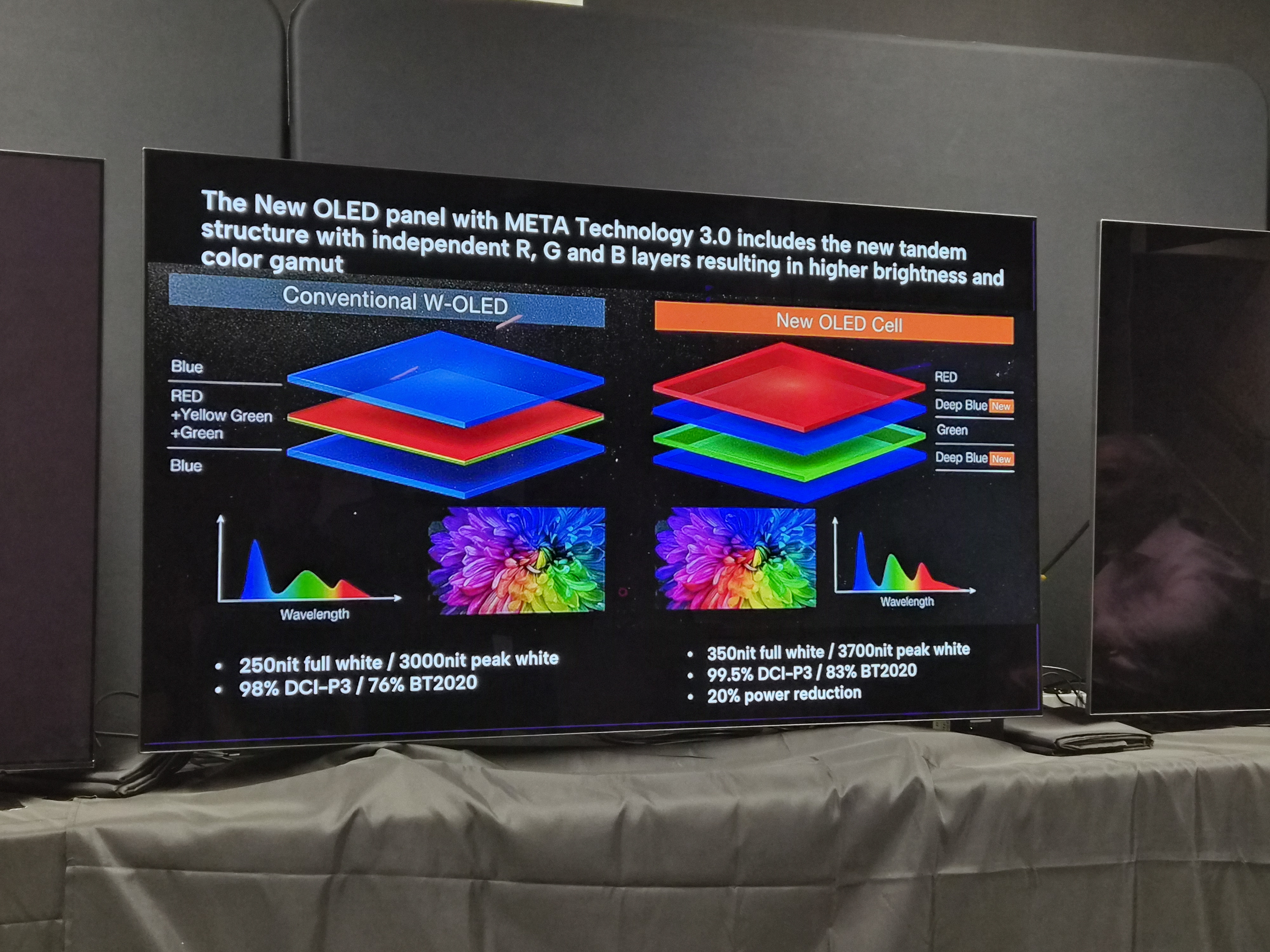
When it comes to features, the Philips OLED950’s stand out specification is its use of a new Meta 3, Primary RGB Tandem OLED panel.
This is a tweaked version of the new LG Display-made panel tech seen on the five-star LG G5 and Panasonic Z95B and a direct rival to Samsung’s QD-OLED, which is used by the Sony Bravia 8 II and Samsung S95F.
It’s a completely new tech that replaces the Micro Lens Array (MLA) hardware Philips used on last year’s flagships. It’s different in that rather than create colours by combining red, green, and yellow elements in a single layer of the screen, it separates the colours into distinct layers positioned between two blue layers.
This apparently lets the set deliver an astounding 3700 nits of peak brightness (for 15 seconds) in isolated areas of the picture. On top of this, the tech also helps improve colour volume, especially in low light.
The OLED950 complements the panel with a 9th Gen P5 AI Dual Engine processor that is similarly heavily focussed on improving the TV’s colour accuracy and gamut coverage – an area where Philips has a track record for being too aggressive, creating slightly too vibrant, overbaked experiences in its bid to blow viewers socks off.
The chipset is doubly important as it’s one of the only big differentiators between the OLED950 and cheaper Philips OLED910, which has the same panel, but a slightly less powerful 9th Gen P5 AI chipset without the Dual Engine tech.
The most interesting feature it brings is a new AI Adaptive Gamut Enhancer, which uses frame-by-frame analysis to try and improve colour volume and let it deliver more intelligent light control, especially during bright HDR content.
In theory, this means skin tones and the ilk look more natural and apparently lets the TV cover 99.5 per cent of the DCI-P3 and 83 per cent of the BT2020 colour gamuts favoured by many filmmakers. We sadly didn't have our colorimeter to hand to check this during our demo.
Outside of this the OLED950’s specifications match most rivals. The increasingly common Google TV operating system runs the show. Dolby Vision, HDR10, HDR10+ Adaptive and HLG HDR support is included, as is 4K/144Hz gaming, with VRR and ALLM – which seems to be the new baseline for a flagship OLED despite the fact the PS5 and Xbox Series X/S can only run at 4K/120Hz.
It also has support for the growing HDR10+ Gaming standard of HDR, which is supported by Nvidia and offers similar powers to Dolby Vision Gaming when playing compatible titles.
The only downside here is that, despite adding a wealth of new features to the set's game mode, including a new mini map zoom feature which lets you adjust the size and location of in-game maps using the TV’s settings, the OLED950 only has two HDMI 2.1 inputs.
With one of these doubling as its eARC input, if you have a Dolby Atmos soundbar and multiple current generation games consoles, prepare yourself for some cable swapping as a result.
Picture
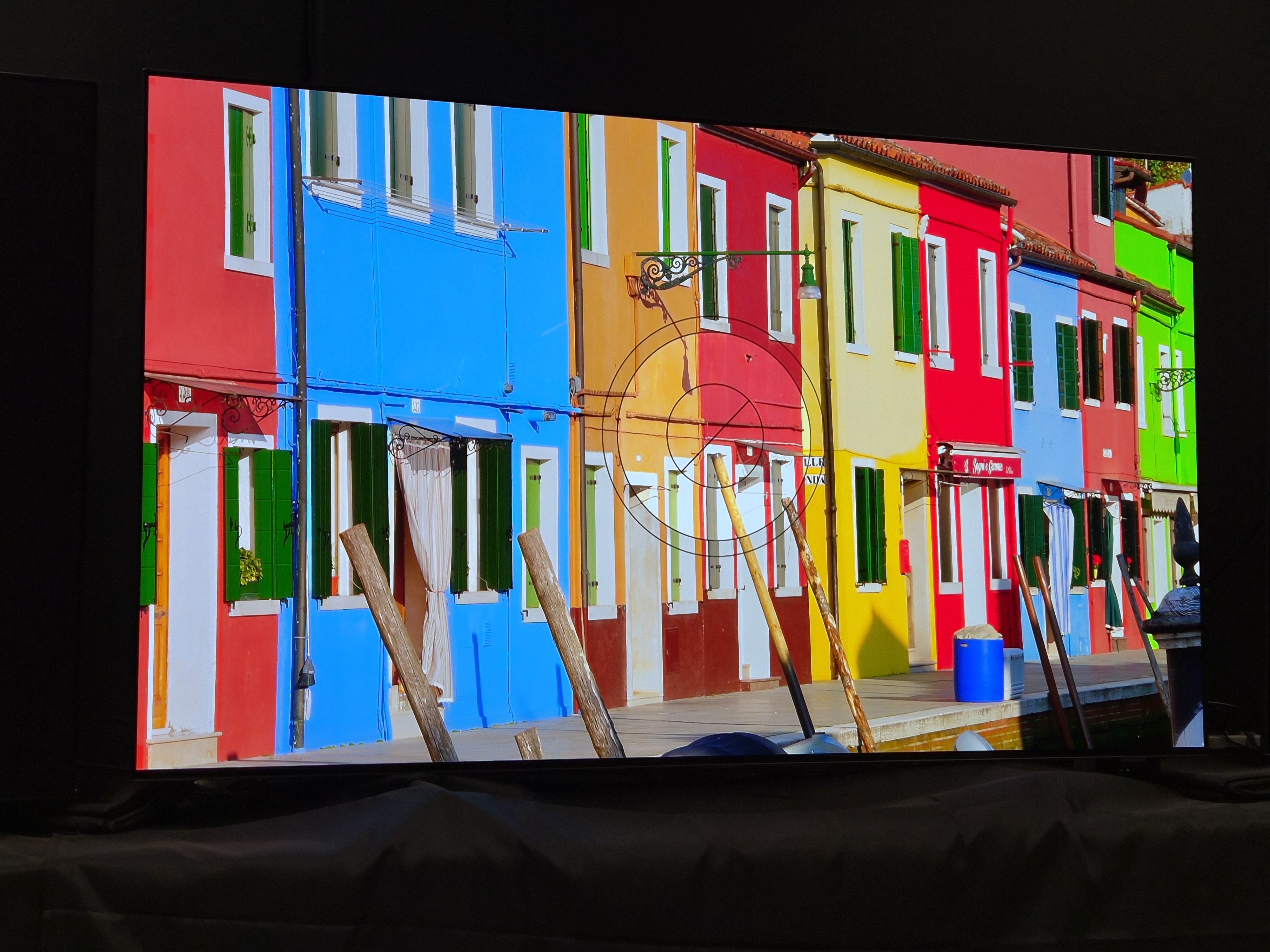
So how does the OLED950 look? Sadly, though we got a tech demo it’s too early to offer any final verdicts as the conditions were less than ideal and we didn't have anywhere near enough time with it.
The viewing room had overhead lights on and the Sony Bravia 8 II, LG G5 and Samsung S95F, as well as the OLED950 Philips being run in the comparison were all kept in their out-of-the-box settings.
Philips' reps also all but growled when we asked if we could play with the settings afterwards. Though in their defence, it was lunch time and we were holding everyone up.
Read our reviews of Bravia 8 II, G5 and S95F and you’ll get our thoughts on their performance in these settings. They’re not great out of the box – you need to tweak the settings if you want great results, as most are locked in Vivid or Dynamic profiles that overbake colours and have their motion-handling cranked to the max, resulting in over-smoothening and the dreaded soap opera effect.
But, there were some definite positives and interesting moments that left us hopeful about the OLED950’s performance.
Starting off, we saw a series of still 4K HDR images of various cities. Philips’ bold approach is clearly visible, with the red bricks of a colourful row of houses popping, creating a vibrant eye-catching picture. Transitioning to a test-still of a snooker table, we found the same was true of greens, which looked incredibly vibrant – one other attendee described it as a "Ghostbusters’ ooze green”.
Moving to a test shot of a woman standing outside a shop, the TV did a decent job retaining dark detail, with every item in the shadow remaining visible. There was a pleasing sharpness to the street as well, with paving stones retaining oodles of detail and every individual slab holding a nicely distinct three dimensionality.
This was a common theme as we moved to a panning shot of buildings, where every part of the concrete office blocks was sharp, and nicely separated from their background, creating an immersive sense of depth.
The same was true of a scene showing fireworks bursting on a pitch-black night sky, with the OLED rendering each explosion with suitable ferocity while retaining a pleasing amount of colour. We couldn't spot any blooming either.
Our only minor concern came when we returned to a day-time street shot, via which Philips tried to show off the accuracy of skin tones. Though there was solid contrast, even in the demo the set looked slightly off, with the darkest parts of some individuals looking a little too yellow – though this could easily be due to the less than optimal lighting conditions of the demo.
Motion has also been worked on. A challenging, rapid panning shot appeared smooth with no artefacts, which is impressive considering the state of things even a few years ago in the TV market.
This all made us curious to try the set in our viewing rooms with actual films, rather than test footage content.
Sound
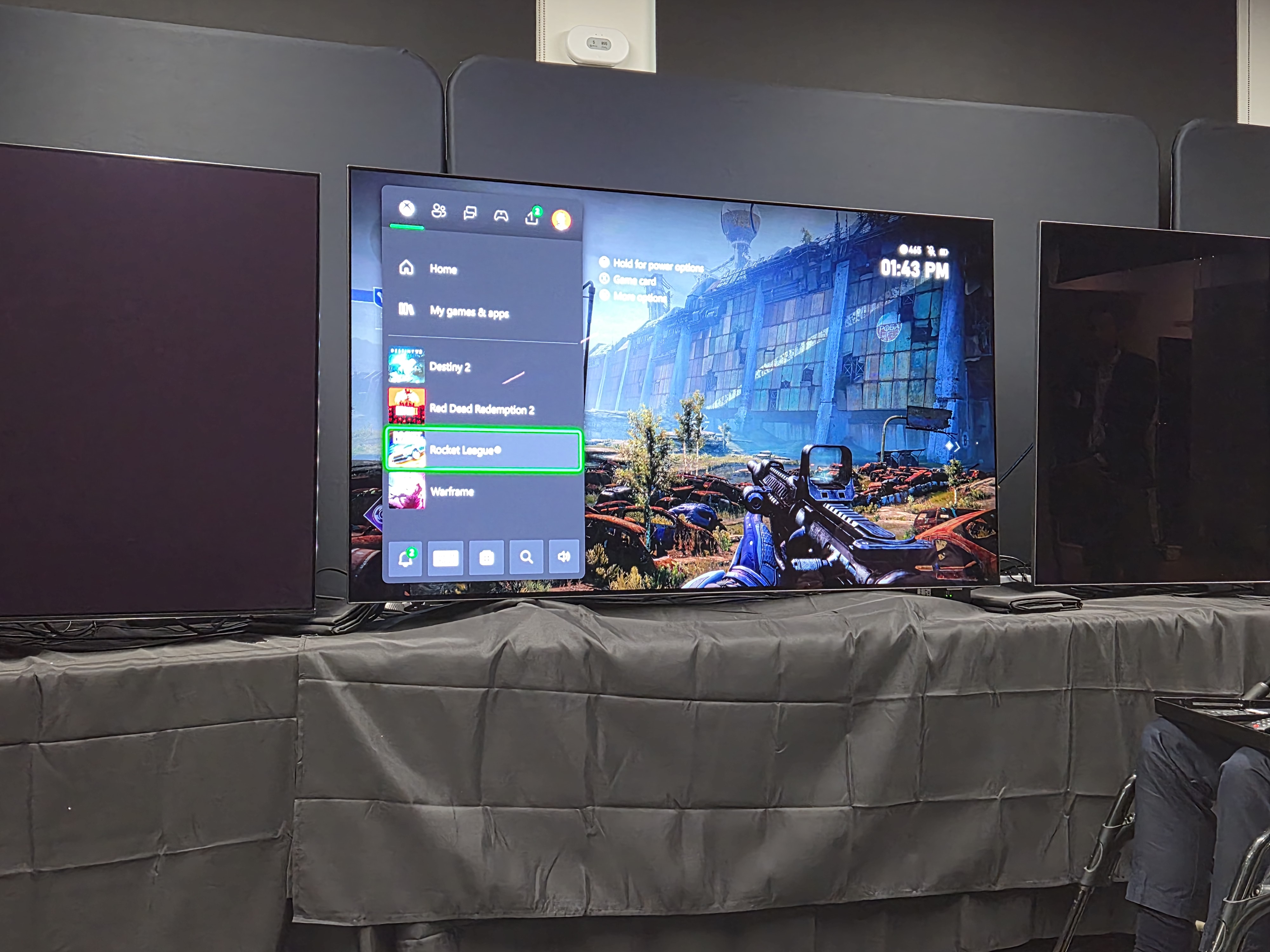
Sadly, our demo didn’t include an audio element, so we can’t offer any insight into how the OLED950’s 70W 2.1 sound system performs. We do know that it is a departure from Philips usual approach to bundle a Bowers & Wilkins-tuned, bolted-on soundbar to the bottom of its sets. This only remains on the OLED910.
Early verdict
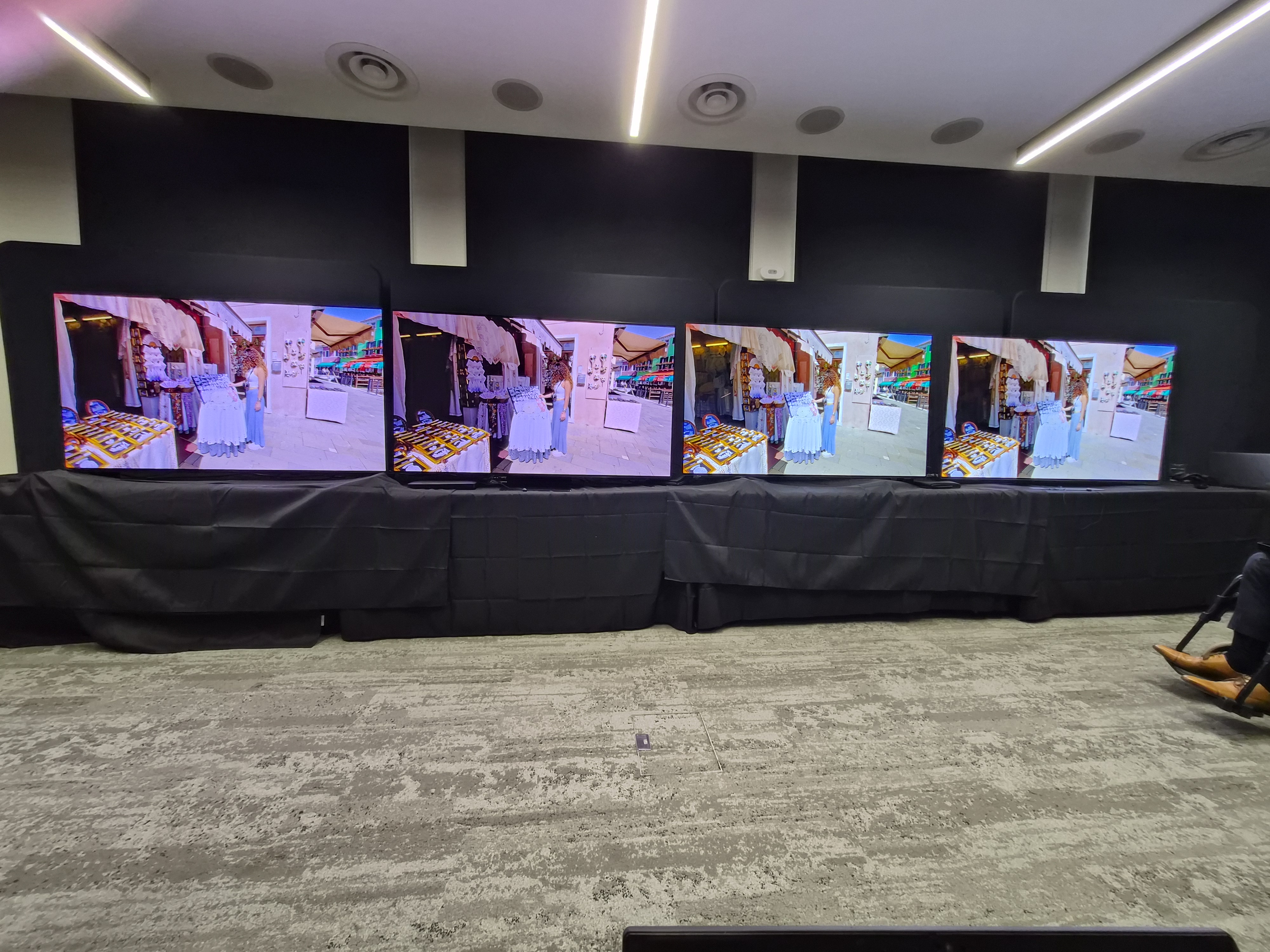
The Philips OLED950 is the last big flagship we’re yet to test this year. And while it has undeniably strong competition from the five-star LG G5, Samsung S95F, Panasonic Z95B and Sony Bravia 8 II, our early impressions are positive.
Though all signs suggest Philips still is pushing ahead with its standard bombastic approach to picture processing and tuning, reading between the lines it sounds like it has at least tempered some of its more aggressive tendencies – especially around colours.
This coupled with its currently incredibly competitive pricing and solid feature set could make it a serious contender in the top-end OLED TV market, if it delivers the goods when we get it into our viewing rooms for testing.
MORE:
These are the best OLED TVs we’ve reviewed
We rate the best 65-inch TVs
Our picks of the best Dolby Atmos soundbars

Alastair is What Hi-Fi?’s editor in chief. He has well over a decade’s experience as a journalist working in both B2C and B2B press. During this time he’s covered everything from the launch of the first Amazon Echo to government cyber security policy. Prior to joining What Hi-Fi? he served as Trusted Reviews’ editor-in-chief. Outside of tech, he has a Masters from King’s College London in Ethics and the Philosophy of Religion, is an enthusiastic, but untalented, guitar player and runs a webcomic in his spare time.
What is a hands on review?
'Hands on reviews' are a journalist's first impressions of a piece of kit based on spending some time with it. It may be just a few moments, or a few hours. The important thing is we have been able to play with it ourselves and can give you some sense of what it's like to use, even if it's only an embryonic view.
You must confirm your public display name before commenting
Please logout and then login again, you will then be prompted to enter your display name.
